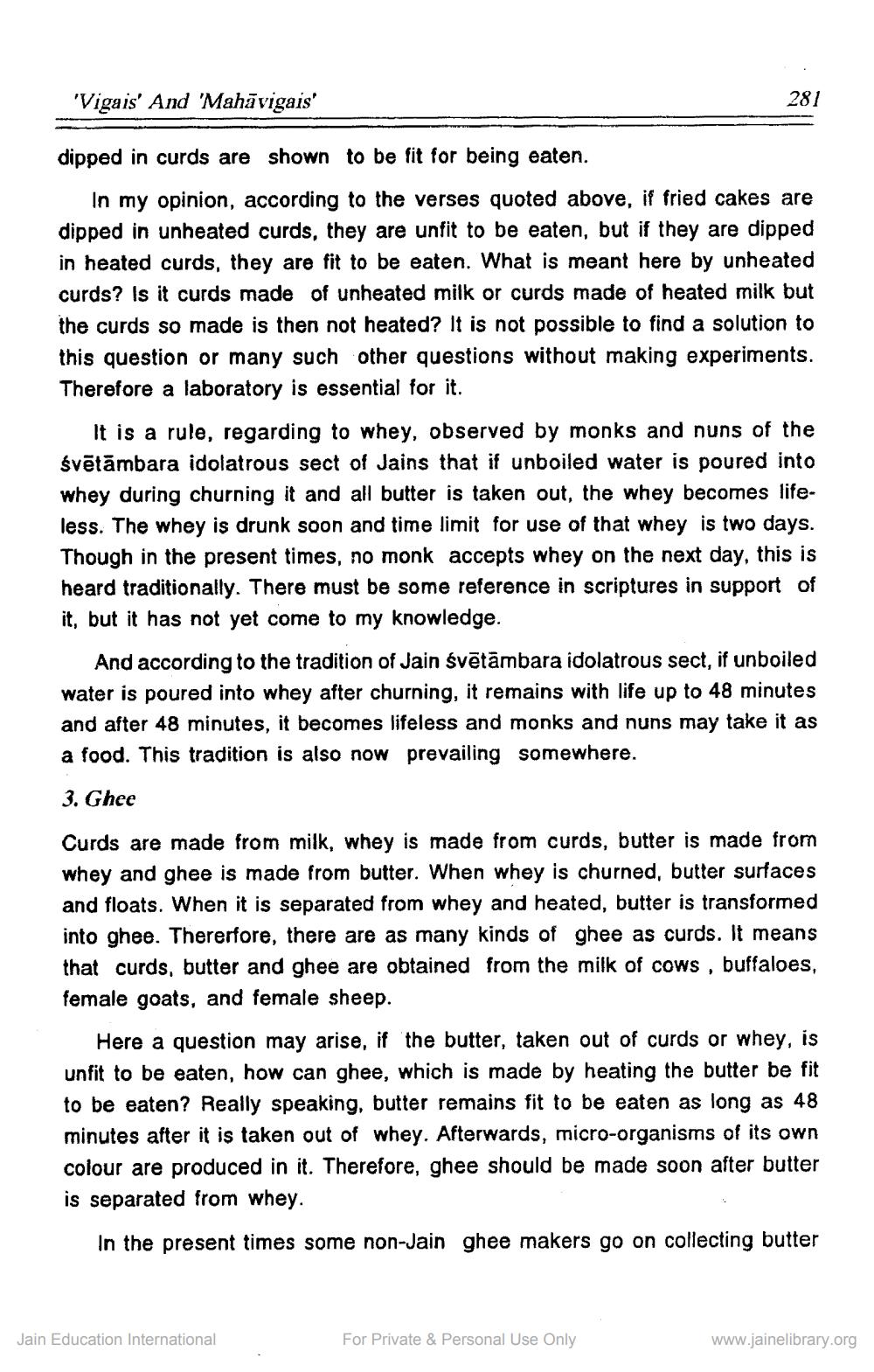________________
'Vigais' And 'Mahāvigais'
dipped in curds are shown to be fit for being eaten.
In my opinion, according to the verses quoted above, if fried cakes are dipped in unheated curds, they are unfit to be eaten, but if they are dipped in heated curds, they are fit to be eaten. What is meant here by unheated curds? Is it curds made of unheated milk or curds made of heated milk but the curds so made is then not heated? It is not possible to find a solution to this question or many such other questions without making experiments. Therefore a laboratory is essential for it.
281
It is a rule, regarding to whey, observed by monks and nuns of the śvētāmbara idolatrous sect of Jains that if unboiled water is poured into whey during churning it and all butter is taken out, the whey becomes lifeless. The whey is drunk soon and time limit for use of that whey is two days. Though in the present times, no monk accepts whey on the next day, this is heard traditionally. There must be some reference in scriptures in support of it, but it has not yet come to my knowledge.
And according to the tradition of Jain svētāmbara idolatrous sect, if unboiled water is poured into whey after churning, it remains with life up to 48 minutes and after 48 minutes, it becomes lifeless and monks and nuns may take it as a food. This tradition is also now prevailing somewhere.
3. Ghee
Curds are made from milk, whey is made from curds, butter is made from whey and ghee is made from butter. When whey is churned, butter surfaces and floats. When it is separated from whey and heated, butter is transformed into ghee. Thererfore, there are as many kinds of ghee as curds. It means that curds, butter and ghee are obtained from the milk of cows, buffaloes, female goats, and female sheep.
Here a question may arise, if the butter, taken out of curds or whey, is unfit to be eaten, how can ghee, which is made by heating the butter be fit to be eaten? Really speaking, butter remains fit to be eaten as long as 48 minutes after it is taken out of whey. Afterwards, micro-organisms of its own colour are produced in it. Therefore, ghee should be made soon after butter is separated from whey.
In the present times some non-Jain ghee makers go on collecting butter
Jain Education International
For Private & Personal Use Only
www.jainelibrary.org




